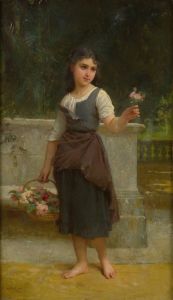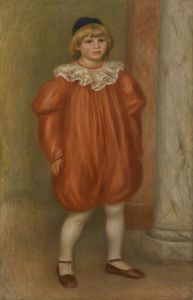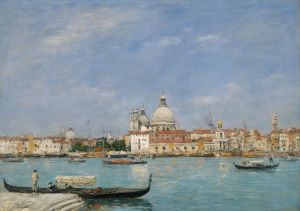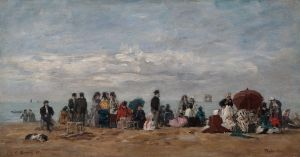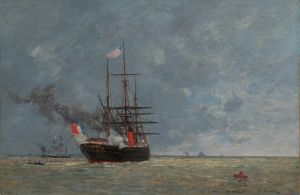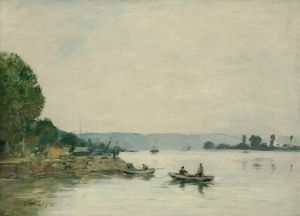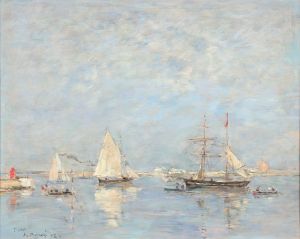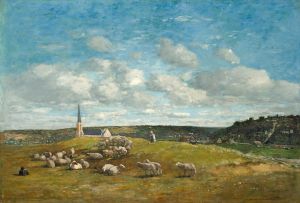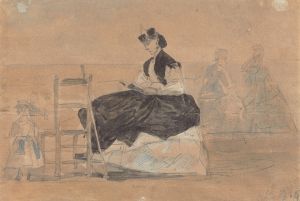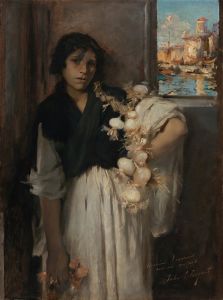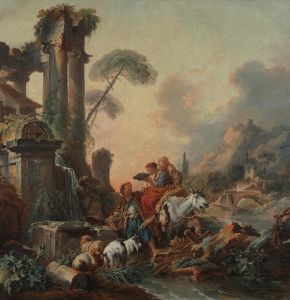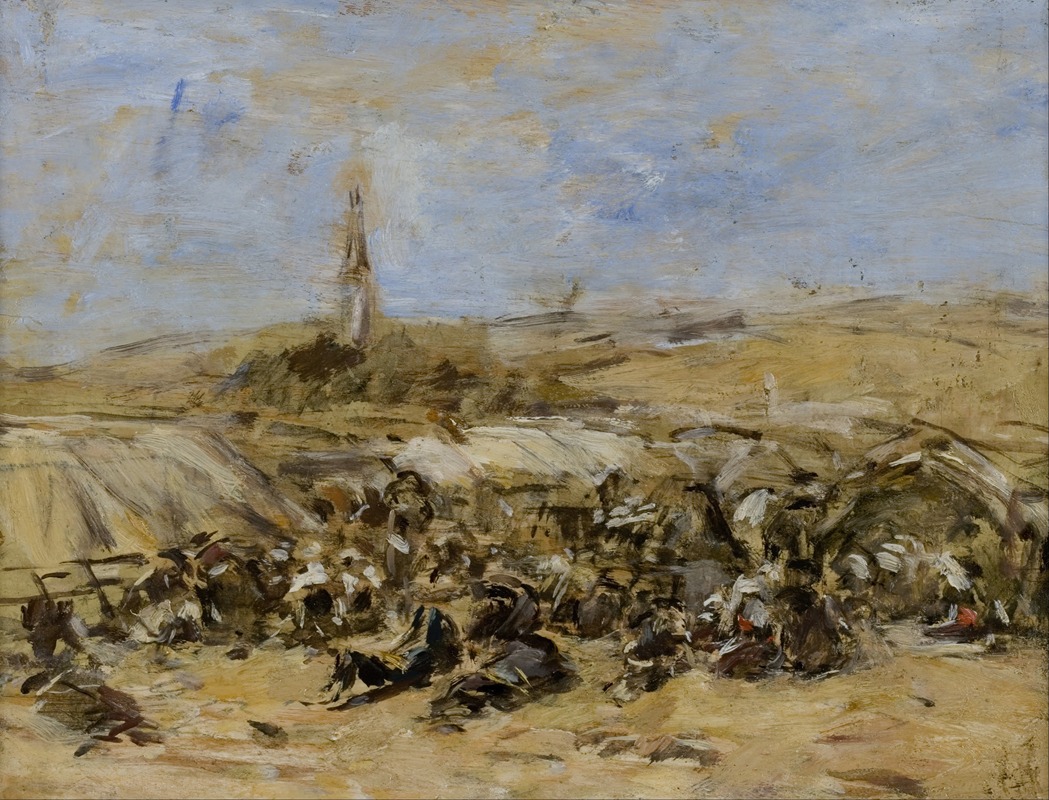
Pardon of Ste-Anne-La-Palud
A hand-painted replica of Eugène Boudin’s masterpiece Pardon of Ste-Anne-La-Palud, meticulously crafted by professional artists to capture the true essence of the original. Each piece is created with museum-quality canvas and rare mineral pigments, carefully painted by experienced artists with delicate brushstrokes and rich, layered colors to perfectly recreate the texture of the original artwork. Unlike machine-printed reproductions, this hand-painted version brings the painting to life, infused with the artist’s emotions and skill in every stroke. Whether for personal collection or home decoration, it instantly elevates the artistic atmosphere of any space.
"Pardon of Ste-Anne-La-Palud" is an oil painting created by the French artist Eugène Boudin in 1858. Boudin, born in 1824, is often regarded as one of the precursors of Impressionism, known for his masterful seascapes and depictions of coastal scenes. This particular painting captures a religious festival known as the Pardon, which is a traditional Breton pilgrimage and festivity held in honor of Saint Anne, the patron saint of Brittany.
The Pardon of Ste-Anne-La-Palud is an annual event that takes place in the small village of Sainte-Anne-la-Palud, located in the Finistère department of Brittany, France. This religious celebration dates back to the Middle Ages and involves a procession, mass, and various local customs. Pilgrims from all over Brittany and beyond gather to participate in this significant cultural and spiritual event.
In "Pardon of Ste-Anne-La-Palud," Boudin captures the essence of this vibrant and deeply rooted tradition. The painting is notable for its depiction of the large crowd of pilgrims, dressed in traditional Breton costumes, gathered on the sandy shores near the chapel dedicated to Saint Anne. The composition is characterized by Boudin's keen observation of light and atmosphere, which he skillfully conveys through his use of color and brushwork.
The scene is set under a vast, cloudy sky, typical of Boudin's interest in capturing the changing weather conditions and their effects on the landscape. The figures in the painting are rendered with a sense of movement and liveliness, reflecting the dynamic nature of the event. Boudin's attention to detail in the costumes and the interactions among the pilgrims adds a layer of authenticity and cultural richness to the work.
Boudin's ability to depict the interplay between light and shadow, as well as his focus on the natural environment, aligns with the principles that would later be embraced by the Impressionists. His work, including "Pardon of Ste-Anne-La-Palud," played a significant role in influencing younger artists such as Claude Monet, who admired Boudin's plein air (outdoor) painting techniques.
Today, "Pardon of Ste-Anne-La-Palud" is recognized as an important example of Boudin's contribution to the development of modern landscape painting. The painting is held in high regard for its historical and cultural significance, as well as its artistic merit. It is part of the collection at the Musée d'Orsay in Paris, where it continues to be appreciated by art enthusiasts and scholars alike.
Eugène Boudin's work remains a testament to his ability to capture the spirit of the places and people he painted, and "Pardon of Ste-Anne-La-Palud" stands out as a vivid portrayal of a cherished Breton tradition.







